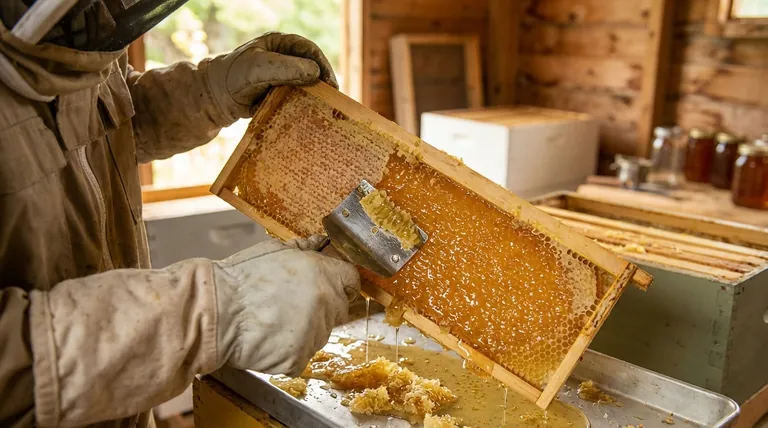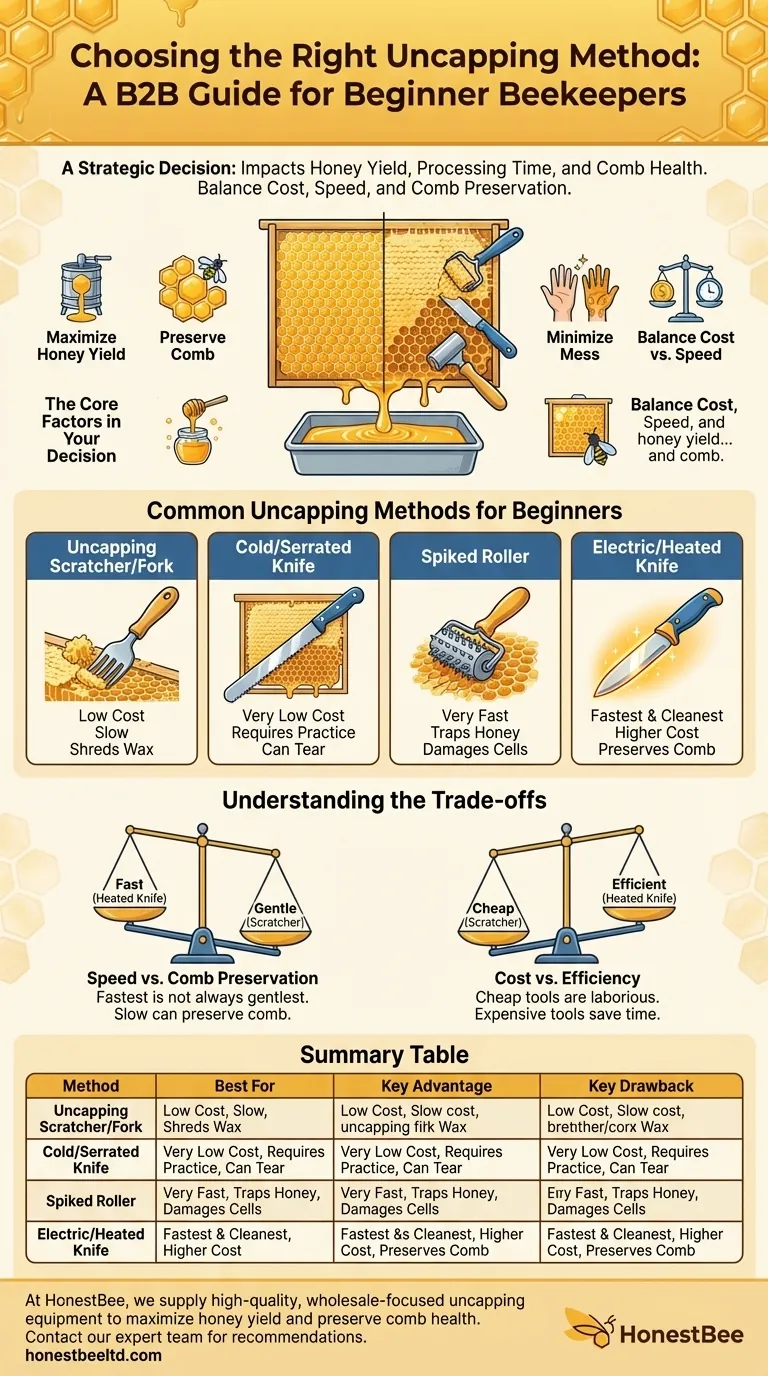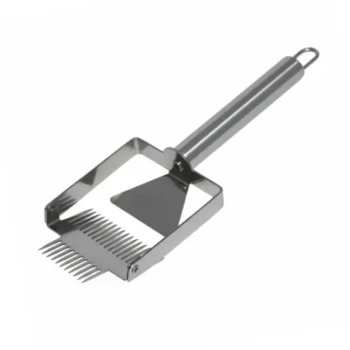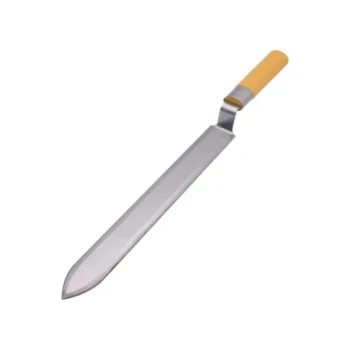Choosing the right uncapping method is one of the most important decisions a new beekeeper will make during their first harvest. This choice directly impacts your final honey yield, the amount of time you spend processing, and how much work your bees must do to repair the comb for the next season. The right tool simplifies the process, while the wrong one can lead to frustration, wasted honey, and damaged frames.
Your goal as a beginner isn't to find the single "best" tool, but to understand the trade-offs. The ideal uncapping method for you balances initial cost, processing speed, and its impact on the delicate beeswax comb.

The Core Factors in Your Decision
Choosing an uncapping method involves more than just removing the wax caps. You are making a strategic decision that affects the efficiency of your entire honey harvest. Understanding these factors will help you select the right tool for your specific needs.
Maximizing Honey Yield
The primary goal of uncapping is to expose the honey for extraction. A clean, efficient cut allows honey to flow freely in the extractor. A method that shreds or mashes the wax can trap honey, reducing your overall yield.
Preserving the Comb
Bees expend significant energy and resources to build beeswax comb. A gentle uncapping method preserves the underlying cell structure. This allows bees to repair the frame quickly and begin refilling it with honey, whereas heavily damaged comb must be completely rebuilt, slowing down honey production.
Minimizing Mess and Cleanup
Honey harvesting can be a sticky process. Some tools, like heated knives, create clean slices of wax that are easy to collect. Others, like rollers or scratchers, can fling honey and wax, leading to a more involved cleanup.
Balancing Cost vs. Speed
The tools available range from a few dollars to several hundred. Your budget is a key factor, but it must be weighed against your time. A cheap tool might be slow and laborious, while a more expensive one can save you hours of work, especially as your apiary grows.
Common Uncapping Methods for Beginners
Each tool offers a different combination of speed, cost, and gentleness on the comb. Most experienced beekeepers own at least two of these to handle different situations.
The Uncapping Scratcher or Fork
This is a simple, fork-like tool with sharp tines. It is used to pierce and pull off the wax cappings.
It is extremely low-cost and excellent for uncapping low spots or uneven areas on a frame that a knife might miss. However, it is the slowest method and tends to shred the wax, making it harder to separate from the honey.
The Cold Knife or Serrated Bread Knife
Many beginners start with a long, serrated bread knife or a specialized "cold" uncapping knife.
This method has a very low initial cost and requires no electricity. With practice, you can achieve a reasonably clean cut, but it can feel like "sawing" and may tear the comb if you are not careful.
The Spiked Roller
This tool looks like a small paint roller covered in sharp plastic spikes. You simply roll it across the cappings to puncture them.
The spiked roller is very fast and easy to use. The major downside is that it does not remove the wax cappings; it only perforates them. This can trap honey and make it more difficult for the bees to repair the cells cleanly.
The Electric or Heated Uncapping Knife
This is the tool of choice for most serious hobbyists and commercial beekeepers. The knife has a built-in heating element that melts the wax as it cuts.
A heated knife provides the fastest and cleanest cut, slicing off the cappings in a single sheet. This preserves the comb and makes separating the wax and honey simple. The primary drawbacks are its higher cost and the need for a power source.
Understanding the Trade-offs
There is no universally perfect uncapping tool. Your decision is a balance between your resources and your goals.
Speed vs. Comb Preservation
The fastest methods are not always the gentlest. While an electric knife is both fast and clean, using it hastily can cause you to cut too deep. A spiked roller is very fast but is arguably the most damaging to the cell structure. A slow, deliberate method with a cold knife can preserve comb but takes immense patience.
Cost vs. Efficiency
A $15 uncapping scratcher is a great starting point for one or two hives. However, if you plan to manage five or more hives, the hours you save with a $150 electric knife will quickly justify the investment in time and reduced frustration.
The Myth of a Single Tool
Most beekeepers quickly learn that a combination of tools is most effective. An electric knife can be used for the main flat surfaces of the frame, while an uncapping scratcher is perfect for the recessed areas the knife can't reach.
Making the Right Choice for Your Goal
Your first harvest is a learning experience. Select the tool that aligns with your scale, budget, and philosophy.
- If your primary focus is the lowest possible startup cost: Start with a simple uncapping scratcher and a long, serrated bread knife.
- If your primary focus is speed and efficiency for a growing apiary: Invest in a quality electric uncapping knife from the beginning.
- If your primary focus is maximizing comb preservation: Use a heated knife with slow, careful strokes, supplemented by a scratcher for low spots.
Ultimately, the best uncapping method is the one that empowers you to complete your harvest confidently and efficiently.
Summary Table:
| Method | Best For | Key Advantage | Key Drawback |
|---|---|---|---|
| Uncapping Scratcher/Fork | Lowest startup cost, uneven frames | Extremely low cost | Slowest method, shreds wax |
| Cold/Serrated Knife | Low-budget beginners | Very low initial cost | Requires practice, can tear comb |
| Spiked Roller | Speed and ease of use | Very fast | Does not remove wax, traps honey |
| Electric/Heated Knife | Efficiency for growing apiaries | Fastest, cleanest cut | Higher initial cost |
Ready to equip your apiary with the right uncapping tools?
At HONESTBEE, we supply commercial apiaries and beekeeping equipment distributors with high-quality, wholesale-focused uncapping equipment. Whether you're starting with a few hives or managing a large-scale operation, we provide the durable tools you need to maximize honey yield and preserve comb health.
Let's discuss the best uncapping solution for your harvest goals. Contact our expert team today for wholesale pricing and equipment recommendations.
Visual Guide

Related Products
- Stainless Steel Pivoting Honey Uncapping Fork with Plastic Handle
- Professional Bent Tine Honey Uncapping Fork with Ergonomic Grip
- All-Stainless Steel Pivoting Honey Uncapping Fork for Beekeeping
- Adjustable Stainless Steel Honey Uncapping Fork with Scraper for Beekeeping
- Stainless Steel Dual Blade Uncapping Plane
People Also Ask
- What is the use of an uncapping fork? A Precision Tool for Hive Management and Honey Harvesting
- What is the primary use of an uncapping fork in beekeeping? A Guide to Precision Honey Harvesting
- What is the recommended practice when using plain knives for uncapping? Master the Two-Knife Method for a Perfect Harvest
- What is the best way to uncap honey? Find the Perfect Tool for Your Hives
- What to use to uncap honey? Choose the Right Tool for Your Apiary



















